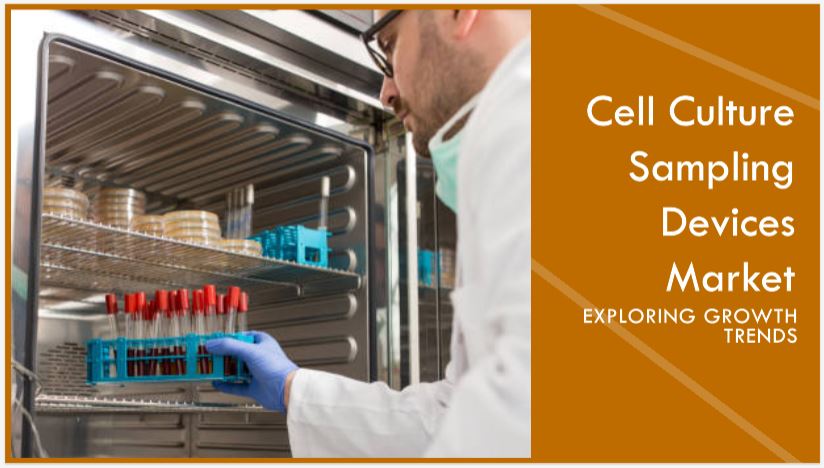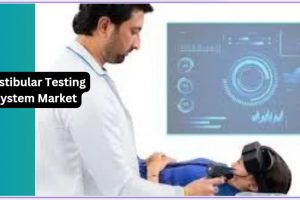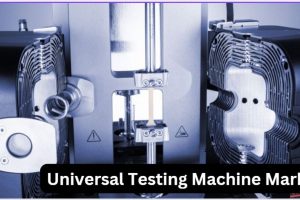
Market Overview
The global Cell Culture Sampling Devices Market is poised to expand significantly, growing from USD 2,805 million in 2024 to USD 6,605.32 million by 2032, at a CAGR of 11.3% during the forecast period (2024-2032). This growth is fueled by the rising demand for advanced biopharmaceutical solutions, increased investments in medical research, and rapid advancements in biotechnology. With a growing focus on personalized medicine and regenerative therapies, the need for precise and reliable cell culture sampling devices is greater than ever.
The increasing prevalence of cancer, genetic disorders, and infectious diseases is driving pharmaceutical and biotech companies to invest in cell culture research, leading to higher adoption of cell culture sampling devices. Moreover, the expanding applications of gene therapy and drug discovery have necessitated more efficient sampling instruments to improve laboratory accuracy and productivity.
Government initiatives and funding for biotechnology and life sciences research have further bolstered market growth. Countries such as the U.S., Germany, China, and Japan are leading the charge in biomedical innovations, ensuring continuous demand for cell culture equipment. The rise of contract research organizations (CROs) and biopharmaceutical manufacturers has also contributed to the growing reliance on automated cell culture systems.
As new technologies emerge, including automated cell sampling and AI-driven analytics, the cell culture sampling devices market is expected to witness a transformation. With increasing regulatory compliance in clinical research, the market will continue evolving to meet stringent safety and efficiency standards.
Check out the full study: https://www.credenceresearch.com/report/cell-culture-sampling-devices-market
Market Drivers
Growing Demand for Biopharmaceuticals and Personalized Medicine
The rising adoption of biopharmaceuticals is a primary driver of the cell culture sampling devices market. Biologics, including monoclonal antibodies, gene therapies, and recombinant proteins, require precise and contamination-free cell culture processes, increasing the need for advanced sampling devices. The global biopharmaceutical industry is witnessing significant growth, with increasing investment in biosimilars and novel biologic drugs. Personalized medicine, which tailors treatment to individual patients based on genetic and molecular profiling, is another key factor driving demand. According to industry reports, the biopharmaceutical sector is expected to grow at a CAGR of over 10% through 2032, further boosting the market for specialized cell culture devices.
Increasing R&D Investments in Cell-Based Research
Pharmaceutical and biotechnology companies, along with academic and research institutions, are heavily investing in cell-based research to develop innovative treatments for chronic diseases. Stem cell research, regenerative medicine, and cancer biology rely on high-quality cell cultures, necessitating the use of efficient sampling devices. Governments and private organizations worldwide are offering substantial funding to promote biomedical research. For example, in 2023, the U.S. National Institutes of Health (NIH) allocated over USD 45 billion for medical research, with a significant portion dedicated to cellular and molecular studies. The demand for advanced sampling solutions is expected to surge as regenerative medicine and tissue engineering gain momentum.
Advancements in Cell Culture Technologies
Recent technological advancements in automated cell culture systems, microfluidic devices, and real-time monitoring solutions have revolutionized the industry. Automated sampling devices minimize human intervention, reducing contamination risks and ensuring higher accuracy in cell culture analysis. The integration of AI-driven data analytics allows researchers to track and optimize cell growth parameters in real-time, improving experimental outcomes. Additionally, innovations such as single-use bioreactors and lab-on-a-chip technology are enhancing efficiency in laboratory workflows. As automation and digitization continue to evolve, the demand for state-of-the-art cell culture sampling devices will witness substantial growth.
Rising Incidence of Chronic Diseases and Drug Development Needs
The global burden of chronic diseases, including cancer, diabetes, and neurodegenerative disorders, is driving the need for innovative drug discovery and therapeutic solutions. Cell culture plays a critical role in cancer research, gene therapy, and precision medicine, necessitating efficient sampling techniques. The World Health Organization (WHO) estimates that cancer cases will rise by over 50% in the next two decades, further intensifying research efforts. The increasing number of clinical trials and drug testing procedures conducted by pharmaceutical firms and contract research organizations (CROs) is boosting demand for high-quality, contamination-free cell culture sampling devices.
Market Challenges
High Costs Associated with Advanced Cell Culture Sampling Devices
One of the major challenges in the market is the high cost of advanced cell culture sampling devices. Automated systems and high-precision instruments require significant investment, making them inaccessible to small and mid-sized laboratories. While large pharmaceutical firms can afford state-of-the-art automated cell culture systems, smaller research institutes and startups often struggle with budget constraints. Additionally, the cost of consumables, maintenance, and specialized personnel training further increases operational expenses. The affordability of advanced cell culture solutions remains a pressing concern for laboratories worldwide, particularly in emerging economies.
Stringent Regulatory Frameworks and Compliance Requirements
The cell culture industry is subject to strict regulatory guidelines to ensure product safety, quality, and reproducibility. Regulatory bodies such as the U.S. FDA, European Medicines Agency (EMA), and WHO impose stringent validation and documentation processes for laboratory instruments, including cell culture sampling devices. Compliance with Good Manufacturing Practices (GMP) and Good Laboratory Practices (GLP) is mandatory, adding to the complexity of market entry. Moreover, evolving regulations related to biologics, gene therapies, and stem cell research often delay product approvals, hindering market expansion. Manufacturers must invest heavily in compliance measures, leading to higher operational costs.
Risk of Contamination and Sample Variability
Despite technological advancements, the risk of contamination in cell culture processes remains a persistent challenge. Even minor contamination by bacteria, fungi, or endotoxins can lead to failed experiments and compromised research data. Laboratories must adhere to strict aseptic techniques and invest in biosafety equipment to mitigate contamination risks. Additionally, sample variability caused by differences in cell viability, reagent quality, or incubation conditions can impact research reproducibility. The need for standardized protocols and improved quality control measures is crucial to addressing this challenge and ensuring consistency in cell culture studies.
Limited Accessibility in Developing Regions
While developed economies like the U.S., Germany, and Japan have well-established biotechnology infrastructures, developing regions often lack access to high-quality cell culture equipment. Factors such as insufficient funding, lack of technical expertise, and inadequate laboratory facilities hinder market growth in regions such as Africa, Southeast Asia, and Latin America. Additionally, challenges related to import tariffs, logistical inefficiencies, and distribution networks limit the adoption of advanced cell culture technologies in these regions. Bridging this gap requires stronger collaborations between governments, private companies, and international organizations to facilitate technology transfer and infrastructure development.
Market Opportunities
Expanding Role of Cell Culture in Precision Medicine
Precision medicine is gaining traction as healthcare providers shift towards personalized treatment approaches. Cell culture sampling devices play a vital role in biomarker research, pharmacogenomics, and patient-specific drug testing. With the growing emphasis on tailored therapies for cancer, genetic disorders, and autoimmune diseases, demand for high-precision cell culture sampling solutions is expected to increase. Companies investing in next-generation diagnostic tools will gain a competitive edge in the evolving healthcare landscape.
Growing Demand for 3D Cell Culture and Organoids
Traditional 2D cell cultures are increasingly being replaced by 3D cell culture models, which provide a more realistic representation of human tissue environments. The emergence of organoids and lab-grown mini-organs has opened new avenues for drug screening, disease modeling, and regenerative medicine. Advanced cell culture sampling devices that can handle complex 3D structures are witnessing rising adoption. According to industry reports, the 3D cell culture market is expected to grow at a CAGR of over 15% in the next decade, creating lucrative opportunities for market players.
Technological Integration with AI and Automation
The integration of artificial intelligence (AI) and robotics in cell culture laboratories is streamlining sample collection, analysis, and monitoring. AI-powered systems can detect anomalies, optimize growth conditions, and automate data interpretation, significantly improving experimental efficiency. Automated sampling devices reduce manual errors, cross-contamination risks, and processing time, making them ideal for high-throughput screening applications. Companies investing in AI-driven lab automation solutions are expected to capitalize on the growing demand for next-gen cell culture technologies.
Expansion in Emerging Markets
The Asia-Pacific, Latin America, and Middle East & Africa regions are emerging as key growth markets for cell culture sampling devices. Countries such as China, India, and Brazil are heavily investing in biopharmaceutical infrastructure, academic research, and clinical trials, creating new opportunities for device manufacturers and service providers. As government initiatives support biotech innovation and foreign investments, the demand for advanced cell culture technologies is set to rise significantly.
Market Segmentation
By Device:
- Cell Culture Sampling Systems
- Cell Culture Incubators
- Cell Culture Sterilizers
- Cell Culture Centrifuges
- Cell Culture Pipetting Instruments
- Cell Culture Biosafety Equipment
- Cell Culture Cryostorage Equipment
By Application:
- Cancer Research
- Gene Therapy
- Drug Development
- Biopharmaceuticals
- Other Applications
By End User:
- Biopharmaceutical Industry
- Academic Institutes
- Research Laboratories
- Clinical Research Organizations
- Hospitals
By Region:
North America
- U.S.
- Canada
- Mexico
Europe
- Germany
- France
- U.K.
- Italy
- Spain
- Rest of Europe
Asia Pacific
- China
- Japan
- India
- South Korea
- Southeast Asia
- Rest of Asia Pacific
Latin America
- Brazil
- Argentina
- Rest of Latin America
Middle East & Africa
- GCC Countries
- South Africa
- Rest of Middle East and Africa
Regional Analysis
North America
North America dominates the market due to high R&D investments, strong biotech presence, and advanced healthcare infrastructure. The U.S. leads with major companies investing in automated cell culture technologies and biopharmaceutical production. The region benefits from government funding and regulatory support for cell-based research. Canada is emerging in stem cell research and regenerative medicine. The demand for monoclonal antibodies and gene therapy solutions is rising. Strategic collaborations between academic institutions and biotech firms further drive innovation.
Europe
Europe’s growth is fueled by cancer research, regenerative medicine, and personalized therapy advancements. Germany, France, and the U.K. lead in biotech innovation and government funding. The region benefits from stringent regulatory standards that ensure high-quality research. Precision medicine and genomic research initiatives are expanding the demand for advanced cell culture sampling devices. The EU’s focus on biotechnology startups is increasing market opportunities. Collaborations between universities and pharmaceutical companies are fostering innovation.
Asia-Pacific
Asia-Pacific is the fastest-growing region due to expanding pharmaceutical industries and rising government R&D investments. China, India, and Japan are driving growth through increased stem cell therapy adoption and biopharma production. The region benefits from low-cost manufacturing and growing clinical trials. Strategic partnerships between global biotech firms and local players are expanding market access. Rising demand for regenerative medicine and biologics is accelerating market expansion. Government policies promoting biotech research and drug discovery further support growth.
Latin America
Latin America is witnessing steady growth due to increasing investments in biotech startups and clinical research. Brazil, Argentina, and Mexico are leading the region, focusing on regulatory reforms and biopharma expansion. Government initiatives are boosting local production of biologics and cell-based therapies. Collaborations with global firms are driving technological advancements. Rising healthcare expenditures are increasing demand for high-quality cell culture solutions. Expanding academic research in cancer and genetic disorders further fuels the market.
Middle East & Africa
The Middle East & Africa market is growing gradually, supported by expanding healthcare infrastructure and increased biotech collaborations. GCC countries are leading with investments in life sciences and cell therapy research. South Africa is emerging as a key player in biopharma and clinical trials. Government support for advanced research facilities is improving accessibility. Partnerships with global biotech firms are fostering innovation. Increasing focus on genetic research and precision medicine is enhancing market potential.
Top Companies
- Thermo Fisher Scientific Inc.
- Sartorius AG
- Merck Group
- GE Healthcare
- Danaher Corporation
- Pall Corporation
- Corning Incorporated
- Eppendorf AG
- Lonza Group
- BioTek Instruments Inc.
Future Outlook
- AI-driven automation in cell culture labs will enhance process efficiency, reduce human errors, and improve reproducibility. Automated sampling systems will enable real-time monitoring and precise data collection, leading to higher accuracy in cell-based research.
- The increasing adoption of 3D cell culture and organoids will transform drug discovery, disease modeling, and regenerative medicine. These advanced models mimic in vivo conditions more effectively, improving the accuracy of preclinical research and personalized medicine.
- The rise of biologics, gene therapies, and cell-based treatments is driving higher demand for advanced cell culture sampling devices. Companies are investing in scalable solutions to support large-scale biopharmaceutical production and process optimization.
- Precision medicine is gaining momentum, requiring high-quality cell cultures for tailored treatments. Advanced sampling technologies will support personalized drug formulations, ensuring better patient outcomes and enhanced therapeutic efficacy.
- Governments worldwide are offering grants, tax incentives, and funding programs to boost biotech innovation. These initiatives are encouraging the development of next-generation cell culture tools, fostering market expansion and research breakthroughs.
- Cutting-edge real-time monitoring technologies will enable better control over cell culture conditions, ensuring consistency and reproducibility. Integrated biosensors and data analytics will enhance decision-making in research labs and biopharmaceutical production.
- Blockchain technology will improve data security, traceability, and compliance in cell culture research. Decentralized ledgers will ensure tamper-proof documentation, reducing errors and enhancing regulatory adherence.
- Investment in oncology, neurology, and immunology research will drive demand for advanced cell culture systems. Universities, research institutions, and pharmaceutical companies will benefit from enhanced funding opportunities.
- Countries in Asia-Pacific and Latin America are investing in biotech infrastructure, talent development, and research facilities. Lower costs of manufacturing and clinical trials make these regions attractive for global biotech firms.
- The shift towards eco-friendly lab consumables and sustainable research practices will shape future trends. Companies are developing biodegradable plastics, energy-efficient incubators, and reusable culture tools to reduce environmental impact.
Check out the full study: https://www.credenceresearch.com/report/cell-culture-sampling-devices-market








